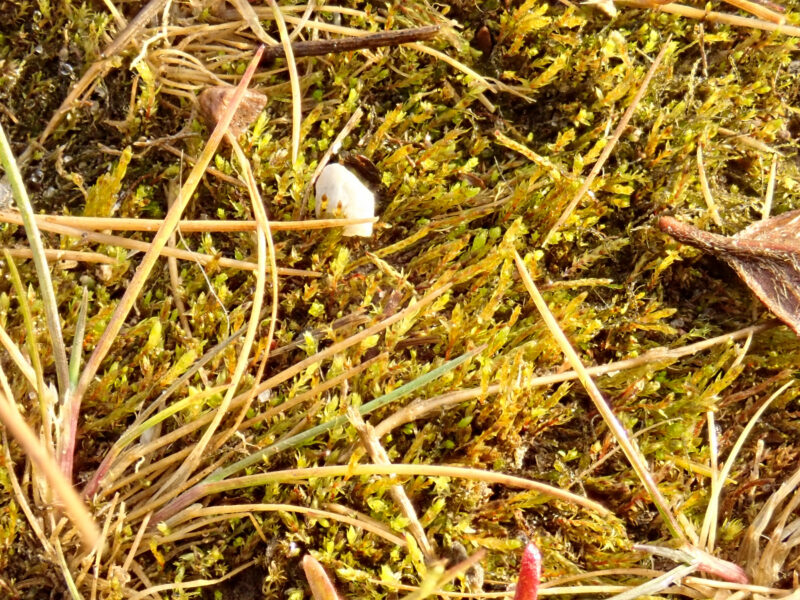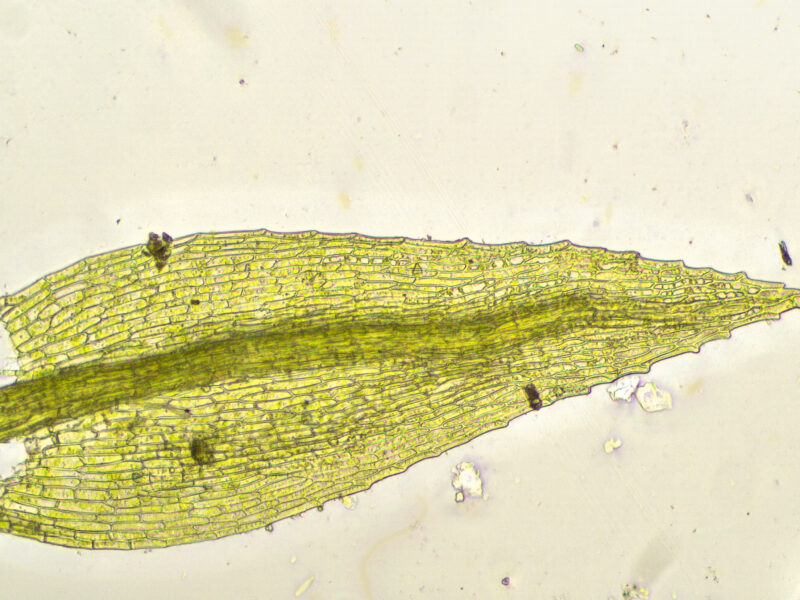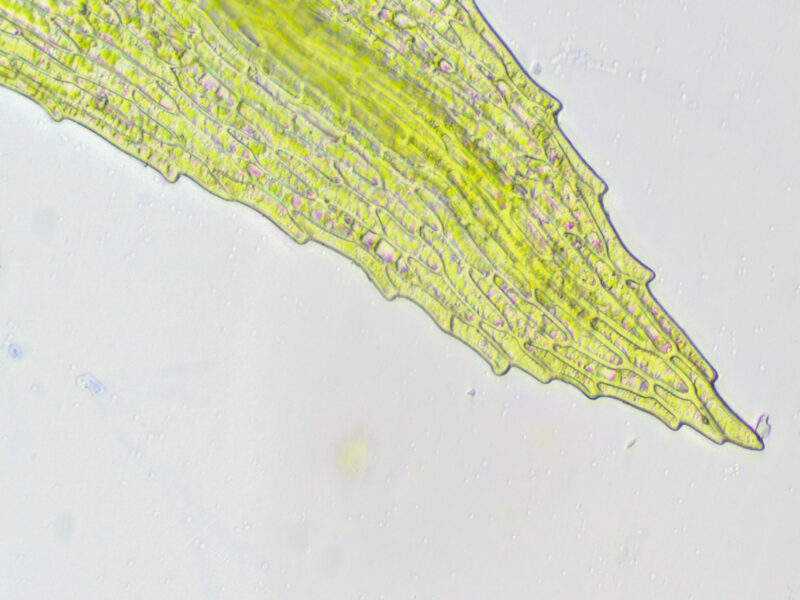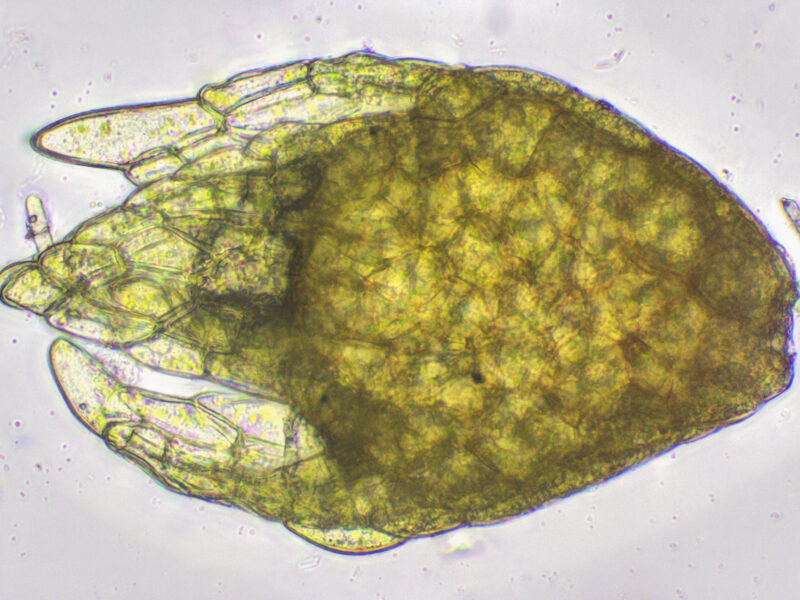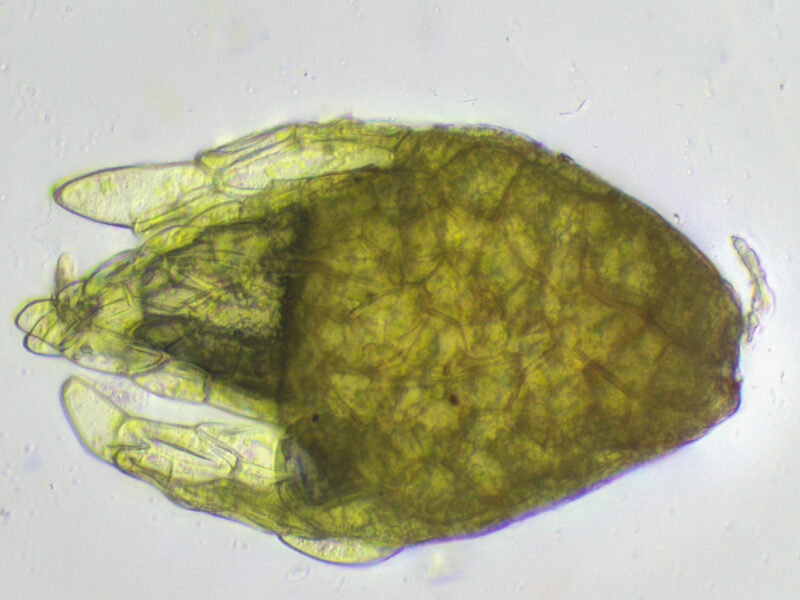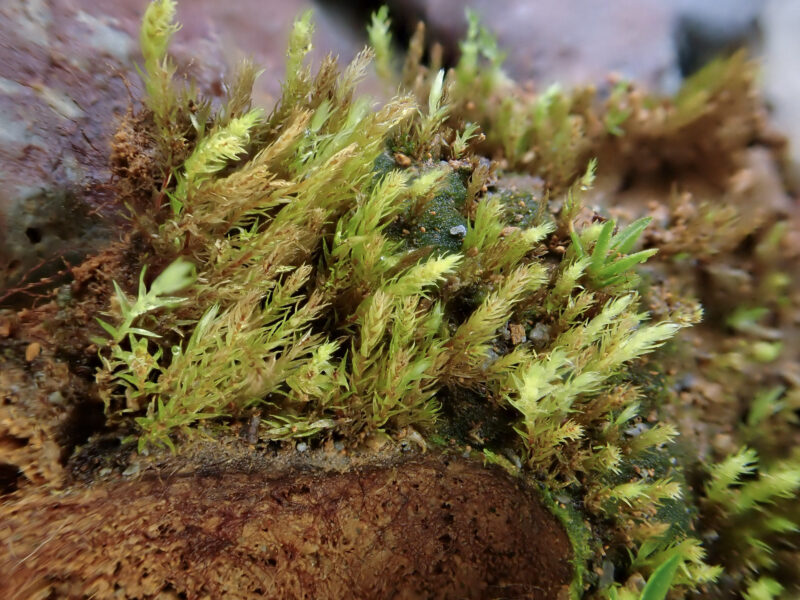Identification notes
A characteristic member of the rare and specialised community of metallophytes that is found in warmer districts on soils rich in tin, copper and other heavy metals. In Cornwall, P. andalusica is often to be found in disused mine sites (on barish ground) but it is a small and unremarkable-looking species and easily overlooked.
It often forms dense turfs or patches of stems around 1cm tall and a few bulbils can easily be seen in some of the leaf axils with a hand-lens. Hints of brown or orange suggest something that is worth a closer look. Under the high-power microscope, the bulbils are brown-tinged with wide, leafy-looking primordia. The bulbils are widest at the point where the primordia arise and, critically, they are flat-topped (see images below). This is a very important point of difference from P. annotina, which has very variably shaped bulbils, but never flat-topped. You’ll need to have a good microscope to confirm that the lower parts of the primordia often overlap.
Pohlia andalusica does not have a Field Guide page.




